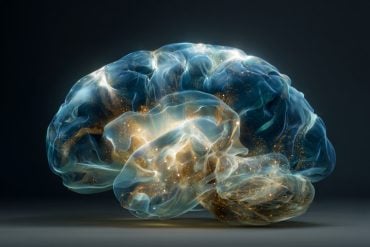Summary: A new study reports foods that contain both carbs and fats evoke greater response in the brain’s reward center than foods that contain either just carbs or fats.
Source: Cell Press.
Researchers show that the reward center of the brain values foods high in both fat and carbohydrates–i.e., many processed foods–more than foods containing only fat or only carbs. A study of 206 adults, to appear June 14 in the journal Cell Metabolism, supports the idea that these kinds of foods hijack our body’s inborn signals governing food consumption.
“The biological process that regulates the association of foods with their nutritional value evolved to carefully define the value of a food so that organisms can make adaptive decisions,” says senior author Dana Small, director of Yale University’s Modern Diet and Physiology Research Center. “For example, a mouse should not risk running into the open and exposing itself to a predator if a food provides little energy.”
“Surprisingly, foods containing fats and carbohydrates appear to signal their potential caloric loads to the brain via distinct mechanisms. Our participants were very accurate at estimating calories from fat and very poor at estimating calories from carbohydrate. Our study shows that when both nutrients are combined, the brain seems to overestimate the energetic value of the food,” she says.
In work that could help explain brain-body mechanisms underlying the genetic predisposition for obesity, eating in the absence of hunger, and difficulty losing or keeping off excess weight, Small and colleagues in Germany, Switzerland, and Canada looked at the neural response to food cues.
Test subjects underwent brain scans while being shown photographs of familiar snacks containing mostly fat, mostly sugar, and a combination of fat and carbs.
Allocated a limited amount of money to bid on their first-choice foods, subjects were willing to pay more for foods that combined fat and carbohydrates. What’s more, the fat-carb combo lit up neural circuits in the reward center of the brain more than a favorite food, a potentially sweeter or more energy-dense food, or a larger portion size.

Our hunter-gatherer ancestors ate mostly woody plants and animal meat, the researchers noted. “In nature, foods high in fat and carbohydrate are very rare and tend to have fiber, which slows metabolism,” Small says. “By contrast, it is very common for processed foods to have high fat and high carbohydrate loads.”
After the domestication of plants and animals and the development of grain and dairy production around 12,000 years ago, opportunities to consume fat and carbohydrates together increased, but processed foods like donuts, which could contain 11 grams of fat and 17 grams of carbohydrate, have only been around for 150 years, not long enough for us to evolve a new brain response to them.
Scientists believe our past experience with the nutritive properties of carbohydrates releases dopamine in the brain through an as-yet-unknown metabolic signal. These kinds of signals seem to help regulate what and how much we eat.
The researchers theorize that the simultaneous activation of fat and carbohydrate signaling pathways launches an effect that human physiology has not evolved to handle. Consistent with this suggestion, rodents given access to fat alone or carbohydrate alone regulate their total daily caloric intake and body weight. But given unrestricted access to fat and carbohydrates, they quickly gain weight.
Funding: The researchers were supported by the German Center for Diabetes Research, the German Research Foundation, and the Swiss National Science Foundation.
Source: Joseph Caputo – Cell Press
Publisher: Organized by NeuroscienceNews.com.
Image Source: NeuroscienceNews.com image is credited to DiFeliceantonio and Coppin et al./Cell Metabolism
Original Research: Open access research for “Supra-Additive Effects of Combining Fat and Carbohydrate on Food Reward” by Alexandra G. DiFeliceantonio, Géraldine Coppin, Lionel Rigoux, Sharmili Edwin Thanarajah, Alain Dagher, Marc Tittgemeyer, and Dana M. Smalll in Cell Metabolism. Published June 14 2018
doi:10.1016/j.cmet.2018.05.018
[cbtabs][cbtab title=”MLA”]Cell Press “Foods Combining Carbs and Fats More Rewarding That Just Carbs or Fats Alone.” NeuroscienceNews. NeuroscienceNews, 15 June 2018.
<https://neurosciencenews.com/carb-fat-reward-9355/>.[/cbtab][cbtab title=”APA”]Cell Press (2018, June 15). Foods Combining Carbs and Fats More Rewarding That Just Carbs or Fats Alone. NeuroscienceNews. Retrieved June 15, 2018 from https://neurosciencenews.com/carb-fat-reward-9355/[/cbtab][cbtab title=”Chicago”]Cell Press “Foods Combining Carbs and Fats More Rewarding That Just Carbs or Fats Alone.” https://neurosciencenews.com/carb-fat-reward-9355/ (accessed June 15, 2018).[/cbtab][/cbtabs]
Abstract
Supra-Additive Effects of Combining Fat and Carbohydrate on Food Reward
Highlights
•Fat and carbohydrate interact to potentiate reward independently of liking
•This is reflected in supra-additive responses in the striatum during food valuation
•Participants are able to estimate energy density from fat, but not carbohydrate
•Accurate estimation of energy density recruits a prefrontal-fusiform gyrus circuit
Summary
Post-ingestive signals conveying information about the nutritive properties of food are critical for regulating ingestive behavior. Here, using an auction task concomitant to fMRI scanning, we demonstrate that participants are willing to pay more for fat + carbohydrate compared with equally familiar, liked, and caloric fat or carbohydrate foods and that this potentiated reward is associated with response in areas critical for reward valuation, including the dorsal striatum and mediodorsal thalamus. We also show that individuals are better able to estimate the energy density of fat compared with carbohydrate and fat + carbohydrate foods, an effect associated with functional connectivity between visual (fusiform gyrus) and valuation (ventromedial prefrontal cortex) areas. These results provide the first demonstration that foods high in fat and carbohydrate are, calorie for calorie, valued more than foods containing only fat or carbohydrate and that this effect is associated with greater recruitment of central reward circuits.






